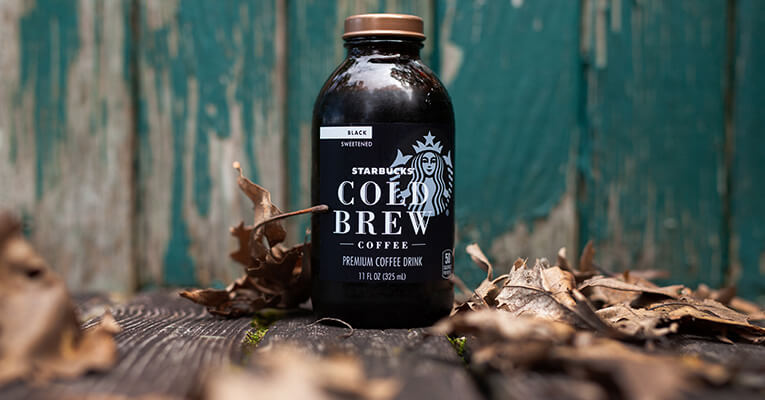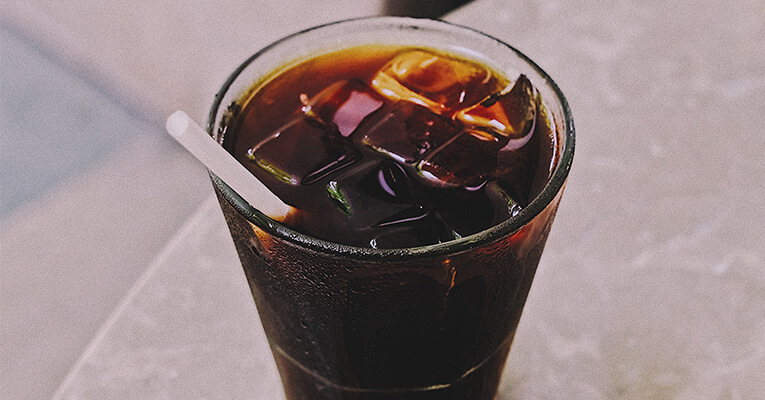Want to shake up your beverage offerings and appeal to customers in the warmer months? Cold brew coffee is a great way to do that!
You surely have seen the distinguishing characteristics of cold brew coffee on social media or at the coffee shop you frequent. The coffee has a unique appearance with its amalgamation of dark and light liquids suspended in a clear cup just before it’s stirred. It’s beautiful, it’s artistic, and it’s also heavily-caffeinated- a total winning combination in the Insta-driven world of coffee beverages.
So how can your restaurant capitalize on the cold brew craze? Let’s first talk about how cold brew rose to popularity and what it actually is.
Where did cold brew coffee come from?

Cold brew may seem it’s around every corner cafe at this point but its origin story dates back to 16th century China. Its latest surge in popularity has been largely tied to Starbucks adding a cold-brew option to select stores in 2015. Cold brew is also commonly found in transportable containers, right next to cash registers, to accommodate the busy customer that will never have to worry about their coffee going cold. This combination of being on a mass-retailer’s menu and the simpleness of grab and go containers make cold brew coffee a widespread, buzzing success for coffee fans.
How is cold brew coffee made?
Cold brew coffee is like the younger, cooler (no pun intended) sister of iced coffee. It has a smoother taste, lower levels of acidity, and often more caffeine in it. But, the cold brew process is a longer one than that of iced, or even hot, coffee. To get the flavorful benefits of a good cold brew, you have to give it a little time…
Cold brew is made by steeping coarse ground coffee in room temperature water (not hot) for up to 24 hours. Afterwards, the grounds are filtered out, leaving a uniform consistency to the liquid. Rather than relying on heat, it’s the steeping time that brings out the “coffee’s oils, sugars, and caffeine”.
There are a lot of cold brew recipes out there that use plastic bags and other non-food-safe options that are more DIY than your health inspector will probably prefer. For a restaurant, bakery, or coffee shop, you’ll definitely want to opt for a stainless steel system to keep things as sanitary as possible. Depending on the gallon capacity you’re interested in, standard cold brew systems can run anywhere from $200 to $700.
How you can try it in your restaurant:

As great as cold brew is, we don’t recommend throwing your hot coffee pot out on the curb. There is definitely an audience for both of these preparation methods. You don’t want to completely isolate someone’s coffee preference, but it’s great to give them options, you may have more coffee fans than you think.
Cold brew coffee makes the most sense in restaurants that serve breakfast or lunch fare over dinner-only eateries. Due to its higher than normal caffeine content, diners probably won’t be turning to this beverage as their post-dinner café unless they’re planning an all-nighter.
As we mentioned above, making cold brew is a lengthy process so unless you’re steeping grounds the whole time your doors are open, you may run out until your next batch is ready to go. If you plan on trying this trend, you’ll have to figure out how much you’ll need based on the day and its popularity, like any other food item. And if you find that your customers are really loving the buzz of cold brew, consider installing a cold brew tap system that can keep larger batches ready to go and very accessible for your staff!
Are you ready to give cold brew a chance in your restaurant? Let us know in the comments or on Facebook what you think of this buzz!







